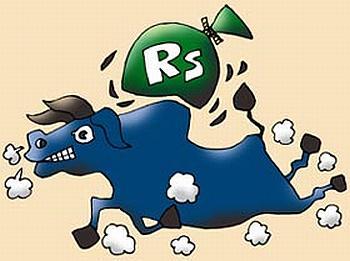 | « Back to article | Print this article |
6 must-know ratios to make money in stocks
Every publicly listed company is bound by law to publish its financial statements quarterly and yearly. There are mainly three types of financial reports; income statement, balance sheet, and cash flow statement. These reports tell you about the health of the company.
While these numbers convey a good idea about the health of the company, these reports do not convey comprehensive information on their own. For example, if balance sheet of a company shows Rs 1,000 crore as debt of the company, is it high? Similarly, stocks of a company are selling at Rs 89. Is it cheap or expensive?
Fundamental ratios
To answer the questions mentioned above, we have to look at the numbers "with respect to" another number. This relation is usually known as ratios.
All the data will still come from financial statements but the ratios present the data in such a way that investors get a better picture which helps them plan their investment. The number of ratios can be many but not all are equally important. We will look at some of the important ratios which will help us understand a company's finances better and make right decision.
Click NEXT for more
The author Pankaj Priyadarshi is a financial consultant and can be reached at pankaj@verticalgrass.com. He is BTech from IIT, Kharagpur and MBA from ISB, Hyderabad.
6 must-know ratios to make money in stocks
1. Earnings per share (EPS)
EPS is an important concept that helps investors understand the earnings which should come to them if the company pays all the earnings to shareholders.
Let's take two companies, Hindustan Unilever Limited (HUL) and ITC. The earnings of HUL and ITC for the year ending in March, 2011 are Rs 2,306 crore and Rs 4,988 crore respectively. If you go by just this data, you may go for ITC as it has larger earnings. But you have to also look at how this earning translates in terms of each share. If I have 10 shares of HUL and 10 shares of ITC, should I sell HUL and buy ITC more?
To answer this, we have to look at the number of shares outstanding for both the companies. Number of shares outstanding for HUL and ITC are 21,595 crore and 77,381 crore.
If you divide the earnings with the number of shares, the EPS is 10.68 and 6.45 for HUL and ITC respectively. This means an HUL shareholder has notional claim over bigger sum.
Click NEXT for more
Note: The data for HUL and ITC has been taken from moneycontrol.
6 must-know ratios to make money in stocks
2. Price earnings ratio (PE Ratio)
If you read reports by analyst, PE ratio dominates almost every other ratio. PE ratio tells about the valuation of stock. A higher PE ratio expresses higher valuation. Unlike in the case of EPS, it is very difficult to say whether higher PE is good or bad.
A higher PE may be an indication that investors are expecting better growth while a lower PE may indicate that the company is in trouble. Let's again take the example of HUL and ITC. The PE ratios are 30.51 and 28.54. The figures are very close. This may mean that market expects both of them to do very well and grow at higher rate in future.
Click NEXT for more
6 must-know ratios to make money in stocks
3. Book value per share
Book value per share indicates how much net asset are backing each share. Book value is net worth of the company. It is the net after you take out every liability from the asset base. The book value, however, doesn't have much relevance for many companies (especially in the knowledge sector firms) as the asset base is very less.
The major value lies in intangibles such as brand, knowledge, and IP driven processes and products. Nevertheless, book value is a still followed by many analysts to get a fair idea about the valuation of stock.
To take the same example of HUL and ITC, their book value per share is Rs 12.19 and Rs 20.51. In such cases, even looking at book value per share will be meaningless. Book value is important in analysing banks and financial institutions. Typically, a higher book value is better and preferable.
Click NEXT for more
6 must-know ratios to make money in stocks
4. Return on net worth (RONW)
Return on net worth indicates the returns that investors get on the shareholders' funds or equity. This is calculated by dividing the net earnings by shareholders' equity or net worth or book value. This is also known as Return on Equity or ROE. RONW or ROE is the most important parameters for investors from returns perspective unlike PE ratio which is the most important from valuation perspective.
Taking the example of HUL and ITC again, the values are as 87.57% and 31.36% for the year 2010-2011. Certainly HUL gave better returns than ITC in the year 2010-2011.
Click NEXT for more
6 must-know ratios to make money in stocks
5. Profitability
Profitability is a measure of operational efficiency of the company. A higher margin is certainly better and it adds to shareholders' net worth. Profitability can be measured as EBITDA margin or net profit margin. EBITDA margin is used to determine the operating efficiency as this doesn't factor for interest, taxes, and depreciation which are more dependent on policies. Net profit margin gives you the final margin after you pay to the Government and creditors. The net profit margin is for shareholders.
EBITDA margin and net profit margin can be calculated by using EBITDA or net profit number and dividing them by revenue. In our example, the EBITDA margins for HUL and ITC are 13.53% and 34.08% while the net profit margins are 11.56% and 22.91%. The data clearly shows that ITC is more profitable than HUL.
Click NEXT for more
6 must-know ratios to make money in stocks
6. Debt equity ratio
Debt equity ratio measure the proportion of debt in relation with equity. Lower ratio is preferable because if the debt portion is high, a large part of the profit may go to pay debt and leave very little for shareholders.
The value is calculated by dividing the debt from balance sheet by net worth. Debt equity ratio for both HUL and ITC are very low.







